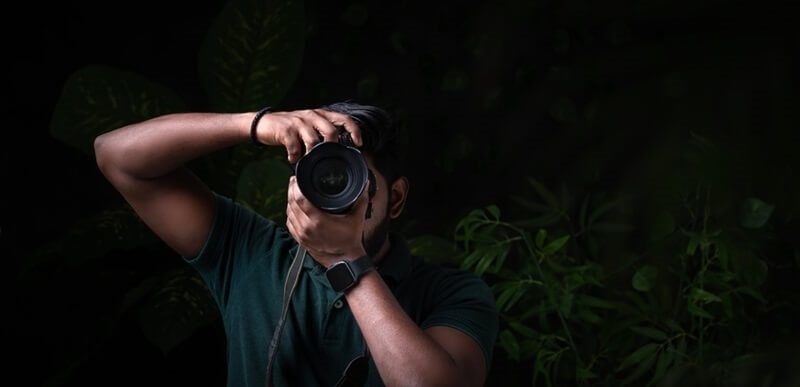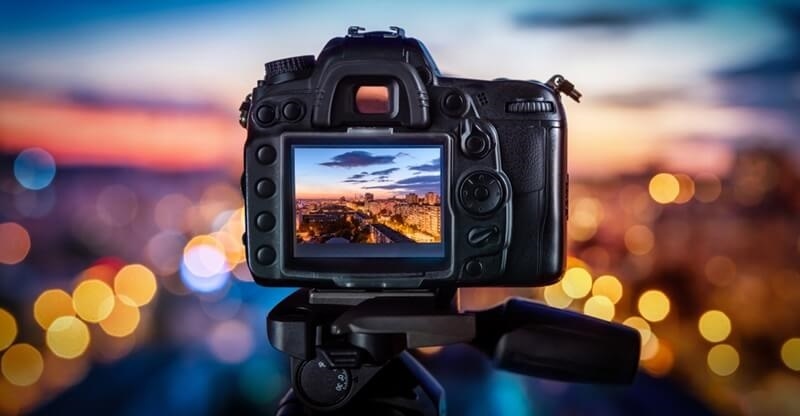
Depth of field is a photographer's ultimate tool. From portraits to landscapes to creative photography, the ability to control what is in focus and what's not can turn a dull snap into an awe-inspiring photo. And the good news? You don't need to break the bank buying fancy cameras and expensive lenses to figure it out. With some expertise, a dash of creativity, and a bit of practice, you can achieve first-rate results without blowing your credit limit.
In this guide, we’ll share depth of field photography tips that anyone—from beginners with smartphones to hobbyists with entry-level cameras—can apply. We’ll cover blurry background tricks, beginner aperture settings, smartphone portrait tips, focus and blur photography basics, and practical, affordable DOF photography techniques that make your photos pop.
Depth of field (DOF) is the range of distance within an image that will appear sharp and in focus. A shallow depth of field will render just a section of the image sharp and the remaining (either background or foreground) out of focus. A deep depth of field will render most of the scene—from foreground to background—sharp.
Appreciating this rule is the secret to creative control over photography. You don't need a $2,000 lens to achieve it. You can focus on know-how techniques more than hardware with the right depth of field photography skills.

Here are a few reasons.
Portraits – Shallow DOF isolates your subject, providing you with that creamy blur in the background.
Landscapes – Deep DOF brings everything into focus, from the near flower to the far mountain.
Creative Shots – Defocusing distractions brings attention to what matters.
For new photographers, being aware of focus and blur photography is generally the difference between two-dimensional, snapshot-looking photos and professional-looking, intentional pictures.
Aperture is what first occurs to individuals when they hear the term depth of field. It's the opening inside your lens for light to enter. Aperture also refers to f-stops (f/1.8, f/5.6, f/16, etc.).
Here are a few depth of field photography tips for early aperture settings to remember:
f/1.8 to f/2.8 - Shallow DOF, great for close-up and portraits.
f/5.6 to f/8 - Balanced DOF, great for street and general shooting.
f/11 to f/16 - Very deep DOF, ideal for landscapes and buildings.
Even if your kit lens can't handle f/3.5 or f/4, you can still achieve blur by other methods of achieving blurry backgrounds—like finding a greater subject distance from the background or moving closer with your camera.
Not everyone has an f/1.4 prime lens. You don't have to have one, anyway! Here are budget-friendly blurry background tricks:
Get Closer to the Subject: The closer you are, the thinner the DOF. Even at f/4, if you're close enough, you can blur the background pretty well.
Create Distance Between Subject and Background: Place your subject a few feet away from objects or walls. More space behind them, more blur.
Use Your Longest Focal Length: If your lens has the ability to zoom to 55mm, 85mm, or even 200mm, zoom in and step back. Squeeze the background with longer focal lengths that create more blur.
Emphasize the Eyes: Especially for portraits, focus the eyes sharply and have everything else fall beautifully out of focus.
These affordable DOF photography techniques allow new photographers to reproduce professional-quality results without professional equipment.
Need a DSLR to get a nice depth of field? No way. New phones have computational photography modes with advanced processing that simulate shallow DOF. But even if you don't have "Portrait Mode" on your phone, you can manage with these phone portrait tips:
Get Close – Take a step closer to the subject. Smartphones have smaller sensors, so taking a step closer will naturally restrict DOF.
Utilize Natural Light – Hard light on the subject and background shadowing provides stronger separation.
Portrait Mode (If supported) – Blur is simulated digitally. Master the control of blur amount for a more gentle effect by practicing.
Third-Party Apps – In-app control of focus and simulation of apertures is possible using apps like Halide (iOS) or Camera FV-5 (Android).
Remember, focus and blur photography basics are the same whether you’re using a DSLR, mirrorless, or phone—positioning, distance, and light matter most.
If aperture is the science of depth of field, focus is the art. Here are the essentials for mastering focus and blur photography basics:
Single Point Focus – Use your camera’s single-point focus mode for precision, especially on eyes in portraits.
Manual Focus – Ideal for creative shots and close-ups. Pro mode in most smartphones nowadays offers this feature.
Foreground Blur – Use objects (like leaves or fences) close to the lens for a pleasant foreground blur that will nicely frame your subject.
Background Blur – Use the distance tricks we've learned here to separate your subject from distractions.
By combining beginner aperture settings with focusing techniques, you’ll gain full control over the sharpness and blur in your images.
Professional-looking photography doesn’t have to break the bank. Here are affordable DOF photography techniques that maximize creativity without costly lenses:
Use Kit Lenses Smartly – Most beginner cameras come with an 18-55mm lens. At 55mm, position your subject away from the background, and you’ll achieve a nice blur.
DIY Bokeh Filters – Cut out figures (hearts, stars) on black paper, place it on your lens, and create bokeh patterns festive with holiday lights.
Shoot Through Objects – Glass, mesh, or even fabric can be utilized to achieve some interesting blur.
Control Exposure with ND Filters – These inexpensive filters enable you to shoot wide open (small f-stop) in very bright sunlight.
Knowing these depth of field photography techniques will ensure that you will not be limited by budget equipment.
Here are a few of them.
Portrait Practice – Zoom your kit lens to its longest focal length. Place your subject six feet from a wall, and focus on the eyes. Observe the blur of the background.
Landscape Sharpness – Switch to f/11 or f/16, focus one-third into the scene, and make everything sharp front to back.
Creative Foreground Blur – Place an object close to your lens and focus on your subject. Play with framing using blur.
Smartphone Depth Challenge – Shoot the same portrait in normal mode and portrait mode. Compare computational blur with actual DOF.
Repeating these exercises helps you "lock in" focus and blur photography basics and apply them unconsciously.
Here are a few of them.
Over-Blurring Everything – Shallow DOF is amazing, but occasionally you need a bit more sharpness to convey the story.
Not Paying Attention to Lighting – Depth of field does not occur in a vacuum; lighting dramatically impacts the look of blur.
Focusing on the Wrong Place – Missed focus ruins portraits. Always check your point of focus.
Forgetting Foreground Interest – Blur works behind and in front of subjects—use it creatively.
By avoiding these mistakes, you’ll refine your craft and make the most of these affordable DOF photography techniques.
Depth of field isn't about expensive cameras; it's about creativity and understanding of the interaction of focus, aperture, and distance. From amateur aperture decisions to iPhone portrait tips, there are countless ways to achieve spectacular results without reaching for the wallet.
The secret is to practice these depth of field photography tips until they become second nature. Experiment with blur background techniques, learn how your focus and blur photography basics work, and keep experimenting with low-cost DOF photography methods to enhance your creative designs further.
Whether you're shooting with a smartphone, an entry-level DSLR, or a mirrorless system, understanding DOF gives you control and enables you to transform mundane situations into engaging stories.
This content was created by AI